
© 2024 | All Right Revered.
A profound insight into the meaning, purpose, and advantages to build an MVP.

Marketing Startegist
A data-driven marketer passionate about empowering businesses through informed decision-making.

As an ambitious entrepreneur or visionary startup founder, your natural inclination might be to eagerly launch a product equipped with all features functioning flawlessly, meticulously addressing every problem identified during the exhaustive market interview process.
Nonetheless, the harsh reality remains unyielding – regardless of the depth of validation and research, attaining perfection is an elusive feat.
The development of a Minimum Viable Product (MVP) is a far more powerful and insightful strategy for introducing your product to the market, and it is without a doubt the pinnacle of product validation.
The main objective to build an MVP lies in putting the product directly in the hands of your discerning customers, urging them to embrace its utility.
Consequently, you seek out and carefully analyze the feedback received, employing a systematic and iterative process to make frequent, incremental enhancements with each version that follows. (Each subsequent product version is aptly referred to as an iteration.)
In this blog post, we will give you a profound insight into the meaning, purpose, and advantages of a Minimum Viable Product. Additionally, it guides you through a transformative step-by-step process to build an MVP for yourself that’s impeccable.
A beta, or test, version of your product or service is referred to as an MVP.
When you decide to build a customer-centric application, determining the true needs of the final end users becomes of the utmost importance.
In order to do this, it is essential to put your project through thorough testing, and this is where the MVP plays a critical role.
The terminology Minimum Viable Product, commonly referred to as an MVP, is a crucial part of The Lean Startup methodology. This product development approach zealously aims to reduce waste, improve operational effectiveness, and equip startups and businesses with keen insight rather than complications
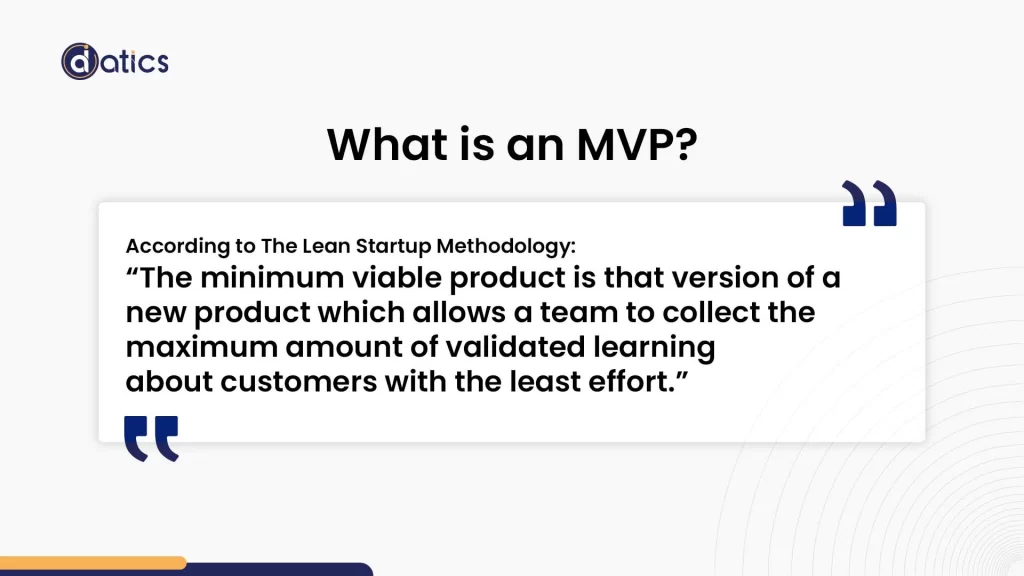
When combined with the minimum viable product (MVP) methodology, this approach can help reduce costs and time during product launch. The MVP allows you to learn from early users and refine your product as you go.
By repeatedly testing your ideas, you can identify and fix errors early on. This allows you to continuously improve your ideas and ultimately bring them to market. This process is a powerful way to manifest your entrepreneurial prowess.
The minimum viable product (MVP) is a crucial step in the development of any successful product. Just as a house needs a foundation before it can be built, an MVP provides a foundation for product development.
By starting with a small, focused product, entrepreneurs and startup founders can learn what their customers want and need, and then iterate on the product based on that feedback.
This process allows entrepreneurs to avoid wasting time and money on developing products that no one wants, and it helps them bring their products to market faster.
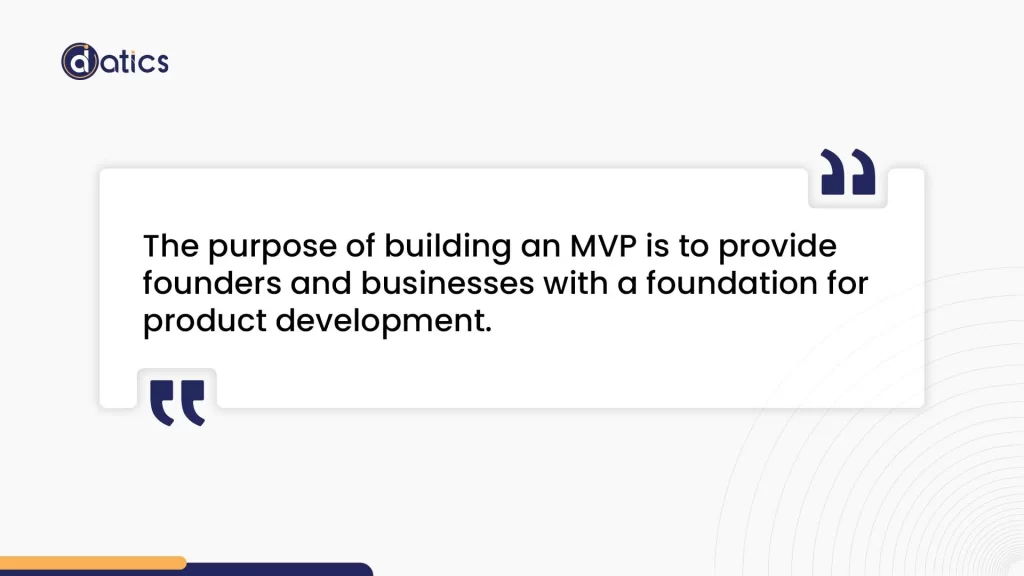
The journey of many founders often comes to a halt before their product reaches the hands of a single user – a common and disheartening reality. Successfully navigating the MVP development process is, therefore, paramount to triumph. Let’s delve into the manifold benefits of building an MVP that await you:
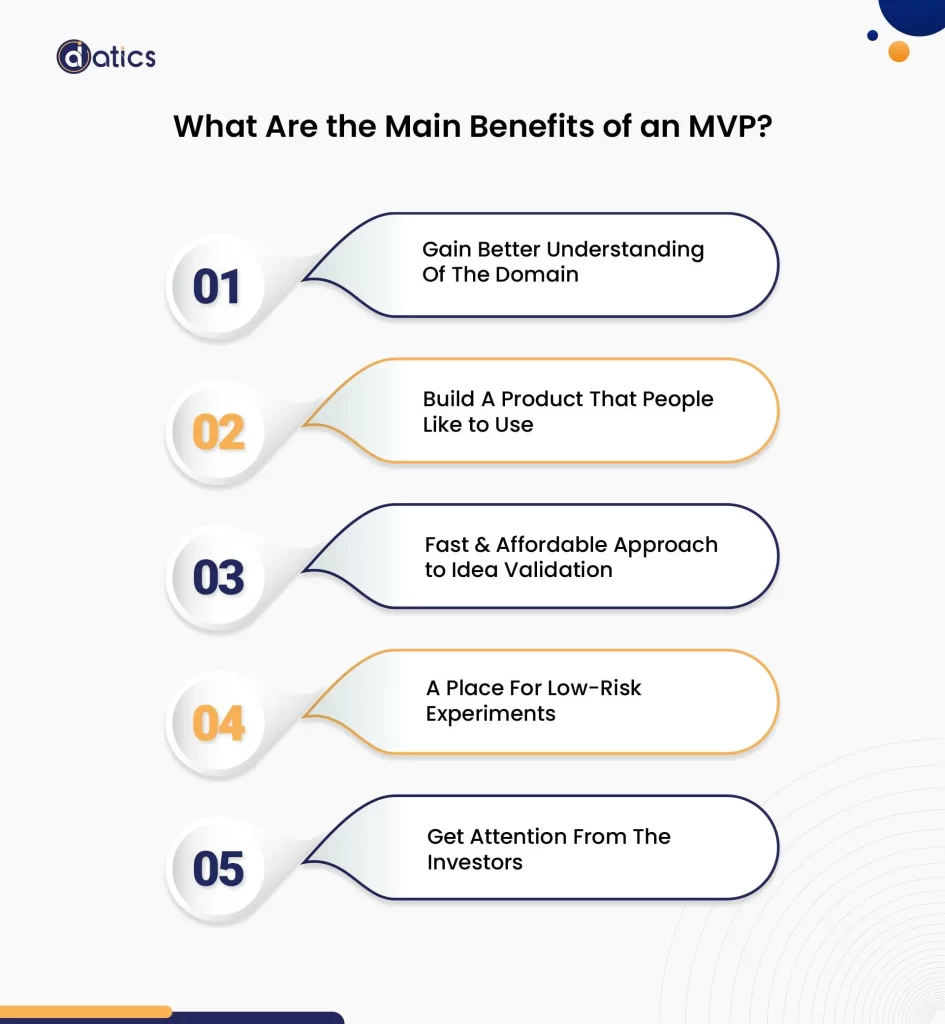
Building an MVP prompts founders to delve deep into the problem, industry, and market, leading to richer domain knowledge and the discovery of untapped white space opportunities.
By opting for an MVP approach, founders gain invaluable insights that may remain elusive with a full-fledged product launch from the outset.
Founders may harbor a fixed image of their future product, but flexibility is the key to catering to users’ needs. With an MVP and valuable user feedback, essential features can be implemented, while non-functional aspects are discarded.
This enables the creation of a product that genuinely resonates with end users, solving their problems effectively.
“Your most unhappy customers are your greatest source of learning.”
The beauty of an MVP lies in its ability to build and validate ideas rapidly and affordably.
With only the minimum features required for validation, the development time and resources invested are focused solely on the vital aspects of the product. It provides a cost-effective way to gauge real user reactions and validate the product concept.
Embracing an MVP paves the way for evolutionary advancements. It facilitates the seamless integration of new technologies as they arise, and adding new features is considerably easier than removing unnecessary ones. MVP keeps the product concept flexible, allowing for the latest changes without excessive risks.
An MVP serves as an impressive showcase of your concept, enabling you to demonstrate the product’s potential rather than merely describing it verbally.
If users find value in the MVP and actively engage with it, the chances of attracting investor attention increase significantly. It serves as tangible evidence of the product’s viability and market appeal.
MVP product development is not very different from software product development in general. The steps are similar, but the speed and goals may differ.
Here’s a walkthrough of the critical steps to build an MVP.
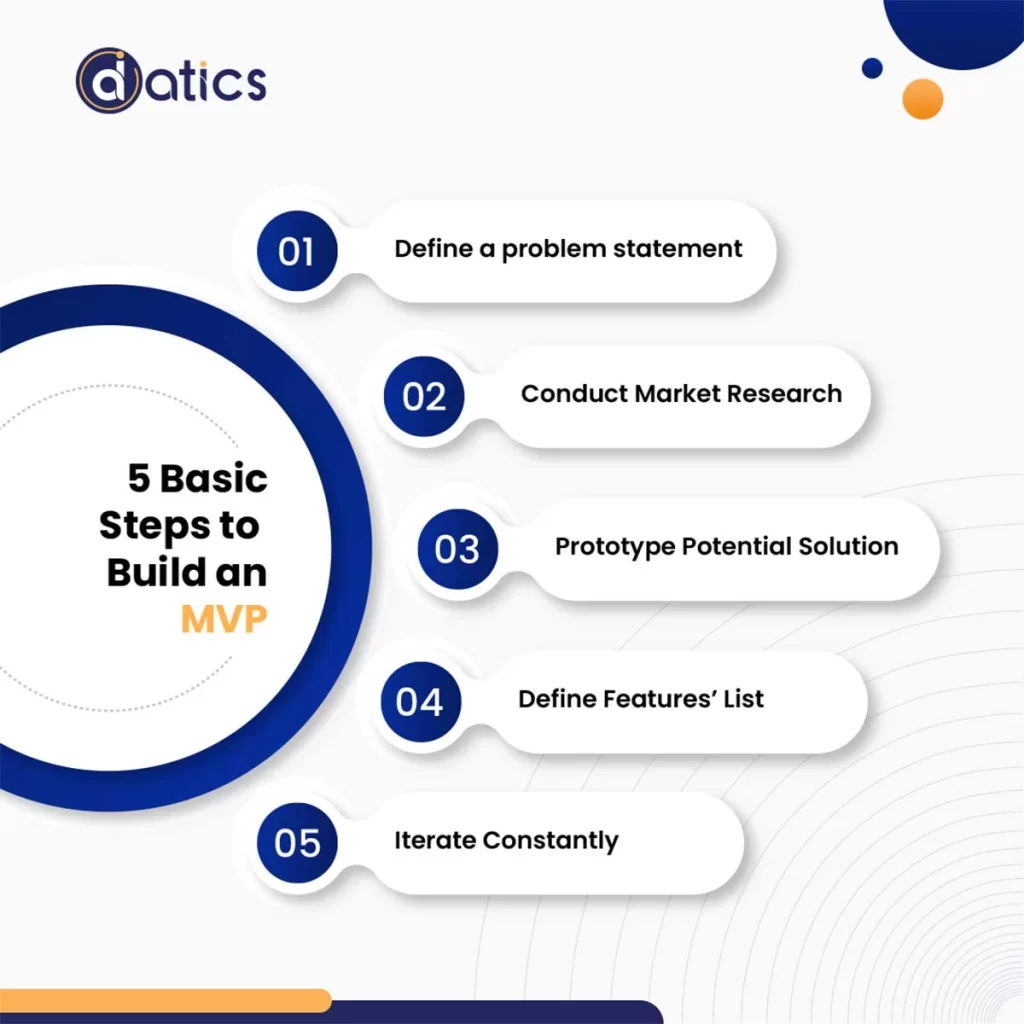
At the core of every MVP lies a clear and concise problem statement. Begin by identifying the pain points and challenges faced by your target audience. Immerse yourself in thorough user research, understanding their needs and aspirations.
This holistic comprehension serves as the bedrock for your MVP, guiding subsequent decisions and developments. Articulate the problem statement in a manner that concisely encapsulates the user’s struggle and forms the driving force behind your product.
An indispensable step in MVP development is market research. Delve into the competitive landscape, analyzing existing solutions and discerning white spaces where your product can carve its niche. Garner insights into user preferences, behaviors, and trends, gathering data to inform your product strategy.
Solid market research lays the foundation for a viable and differentiated product, ensuring it stands out amidst a sea of offerings.
With a comprehensive understanding of the problem and market dynamics, it’s time to ideate and prototype potential solutions.
Create a low-fidelity prototype that embodies your envisioned MVP, allowing you to visualize the user experience and interface. This iterative process enables you to rapidly refine your ideas, incorporating feedback from stakeholders and potential users.
Prototyping is a cost-effective way to validate your concept, paving the way for an efficient and user-centric product.
Incorporate the insights garnered from the problem statement, market research, and prototyping phase to define the core features of your MVP.
Prioritize these features based on their impact and complexity, aiming to strike a fine balance between delivering value to users and minimizing development time.
The focus should be on the most crucial functionalities that address the identified pain points. As your MVP evolves, this feature list will serve as a guiding roadmap, preventing feature bloat and ensuring a streamlined user experience.
The essence of MVP lies in continuous improvement and iteration. Launch your MVP to a limited user base, seeking their valuable feedback and insights. Embrace this user feedback to refine and optimize your product with each iteration.
Monitor user engagement, behavior, and preferences, using data-driven insights to make informed decisions.
This iterative approach empowers you to stay attuned to evolving user needs, refine your product’s direction, and deliver an MVP that resonates with its target audience.
As an early stage startup founder, the quest to bring your innovative ideas to life through a Minimum Viable Product (MVP) comes with the challenge of cost management.
Understanding the cost implications and various development options is crucial for founders in addressing the needs of their end users, who are discerning buyers of their products seeking efficient and budget-friendly solutions.
To understand this, let’s delve into the cost breakdown to build an MVP through different approaches and how each addresses the unique needs of startups and businesses.
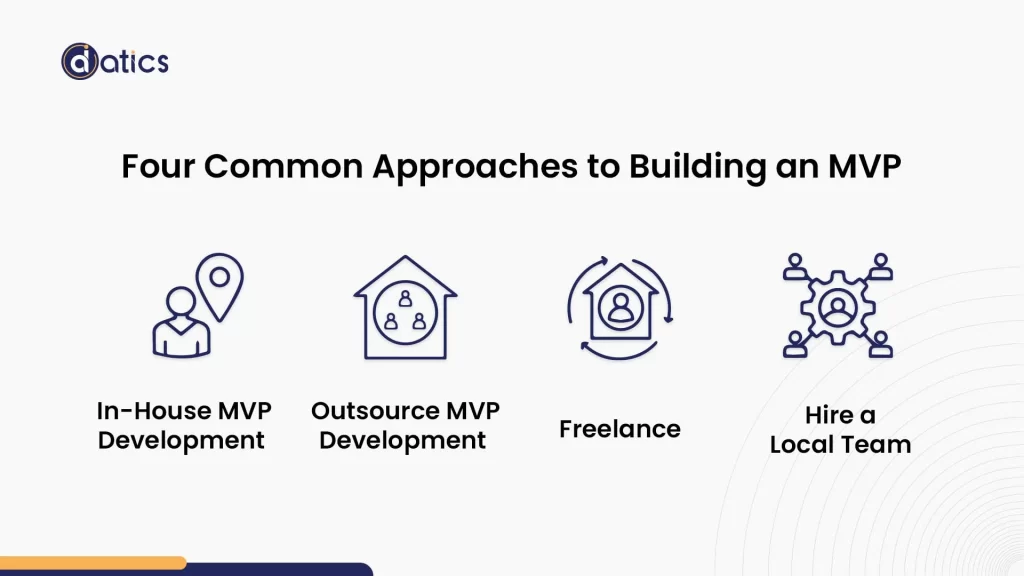
To understand this, let’s delve into the cost breakdown to build an MVP through different approaches and how each addresses the unique needs of startups and businesses.
Choosing an in-house MVP development is a crucial decision that founders must contemplate, offering both advantages and drawbacks.
While this model fosters open communication and authentic relationships within the team, identifying individuals with specific skill sets becomes paramount.
However, one significant drawback lies in the cost aspect. For startups on a tight budget, considering MVP development services might be a prudent option. These services cover not only development but also infrastructure and recruiting expenses.
Understanding the pros and cons of in-house development empowers startups to make informed decisions that align with their financial resources and strategic goals.
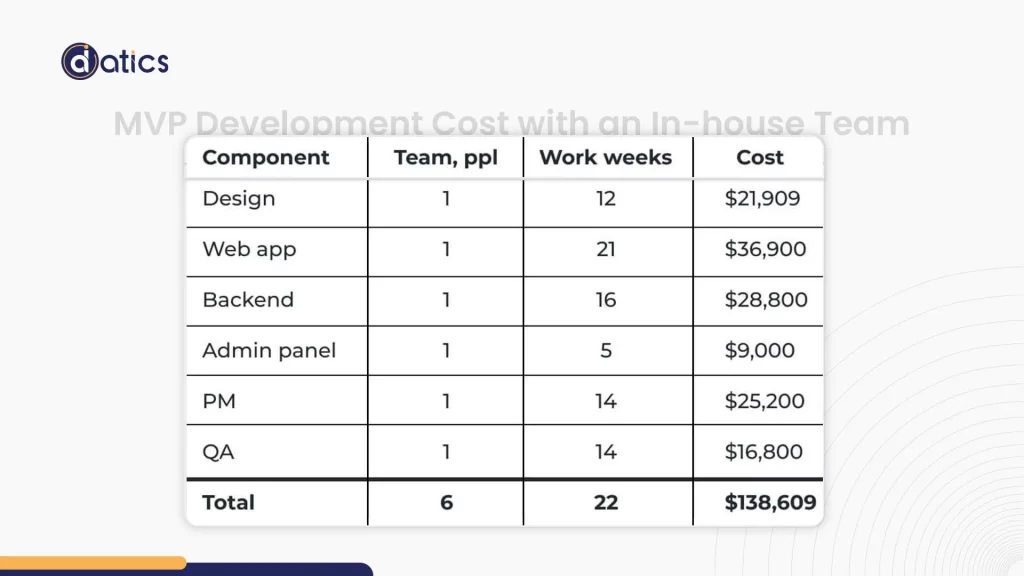
MVP Outsourcing offers a highly feasible alternative to in-house development, addressing the concerns of entrepreneurs and startup founders. By partnering with an MVP app development company, you can bypass the need for in-house staff, saving valuable time and effort.
The trend of opting for remote software development services and staff augmentation, even among clients operating in close proximity, has gained traction due to advancements in technology and agile methods.
The concerns related to trust and time zone differences are effectively resolved with the aid of cutting-edge tools and technologies.
Considering the cost aspect, outsourcing MVP development can be cost-effective, with prices as low as $30 per hour for outsourcing an offshore team in Asia.
A four-person team can cost you $120, and the overall cost to build an MVP may vary around $19,000 per month based on your specific app requirements, design, and features.
Global IT Resource Outsourcing Rates per hour are given below:
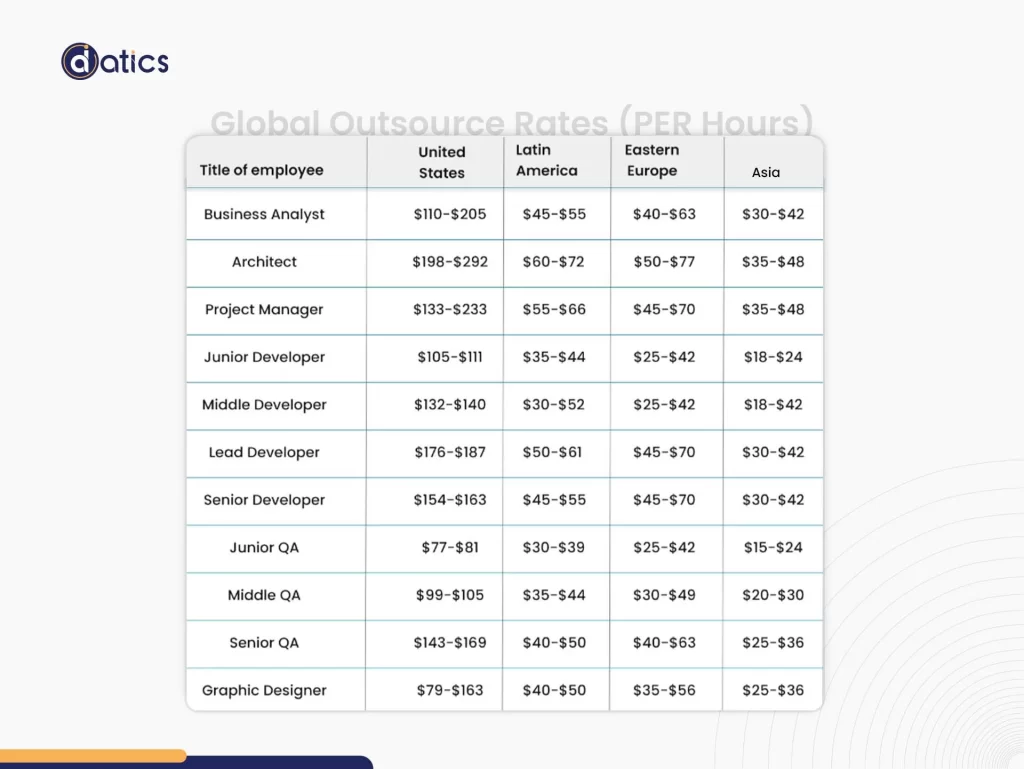
Engaging a freelancer can be a cost-effective choice, offering potential benefits if you select the right candidate. However, concerns about trusting their work or difficulties in team interactions may arise.
To address these issues, outsourcing to a reputable software or app development company emerges as the best solution. These companies treat your MVP project with the utmost care, ensuring optimal results, quality, and speed.
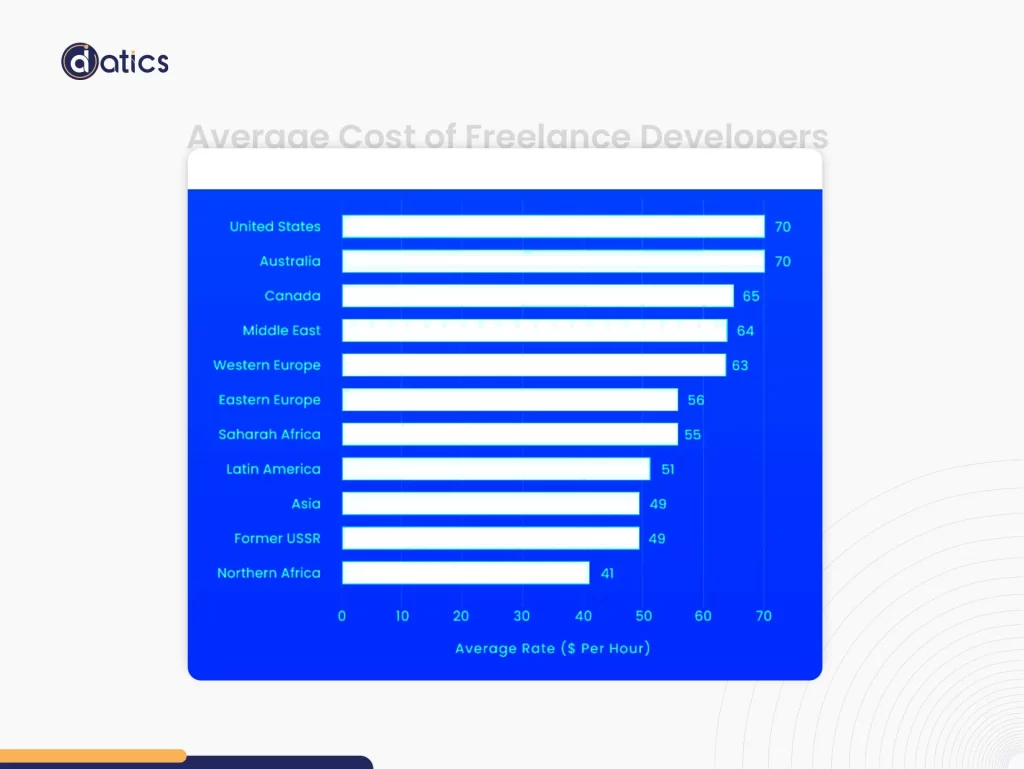
While hiring a freelancer might cost around $5,000 per month for a full-stack developer, employing a designer and tester would add approximately $4,000 and $2,500 per month, respectively. Depending on their expertise, experience, and dedication, building an MVP with a freelancer may range from $4,000 to $15,000.
Nonetheless, opting for a reliable software product development company provides reassurance and commitment to your project, making it a prudent choice for successful MVP development.
Opting for a local team for MVP development is worth considering as it covers the development of business and technological processes. With specialized developers, project managers, and testers, you gain enhanced engagement and specified processes.
To find a reputable MVP development company, platforms like Clutch or GoodFirms offer valuable client ratings and feedback to assist you in selecting a competent and dependable team.
Agency prices typically range from $100 to $250 per hour for one specialist, requiring at least $400 per hour for a dedicated MVP development team.
Considering the monthly cost of up to $64,000, you must weigh the benefits and decide if this investment aligns with your goals. Let’s now explore the cost of a minimum viable product, which varies based on the type of team you choose.
At Datics AI, we help you build an MVP, meticulously crafted to cater to the needs of your startup, with a similar approach and steps as mentioned above.
Starting with understanding the problem you aim to solve, we develop the MVP to test its feasibility. An excellent example of this process is FunTown RV, a leading recreational vehicle provider in the US.
FTRV came to us with the challenge of managing and organizing their data. They wanted a single point where their 350+ employees, spread across 15+ US states, can get all their information from.
We started to move towards the solution by taking small steps.
The Datics AI team finally came up with the solution of FTRV Central Point, a web portal for seamless management of company information, training, and performing other operational tasks.
While building an MVP might seem like a significant undertaking, it serves as a crucial initial step in your startup journey.
By adopting this approach, you can validate your idea rapidly and cost-effectively, gather feedback from genuine users, and present compelling evidence of your idea’s viability to stakeholders and investors.
Throughout this guide, we have walked you through the MVP creation process, emphasizing the importance of defining the problem, conducting market research, prototyping, and collecting feedback.
These fundamental steps are the pillars to build an MVP successfully.
Having accumulated five years of experience in developing products for startups and businesses of all sizes, we understand the value of starting small and gradually shaping a remarkable product solution.
We possess the expertise to guide your idea from the MVP stage to the full realization of a product that meets people’s needs.
If you are seeking a reliable product partner to assist you with MVP development, do not hesitate to contact us!
This could be the beginning of an exciting new journey together, turning your vision into reality.
Share the details of your project – like scope, timeframe, or business challenges. Our team will carefully review them and get back to you with the next steps!

© 2024 | All Right Revered.
This guide is your roadmap to success! We’ll walk you, step-by-step, through the process of transforming your vision into a project with a clear purpose, target audience, and winning features.